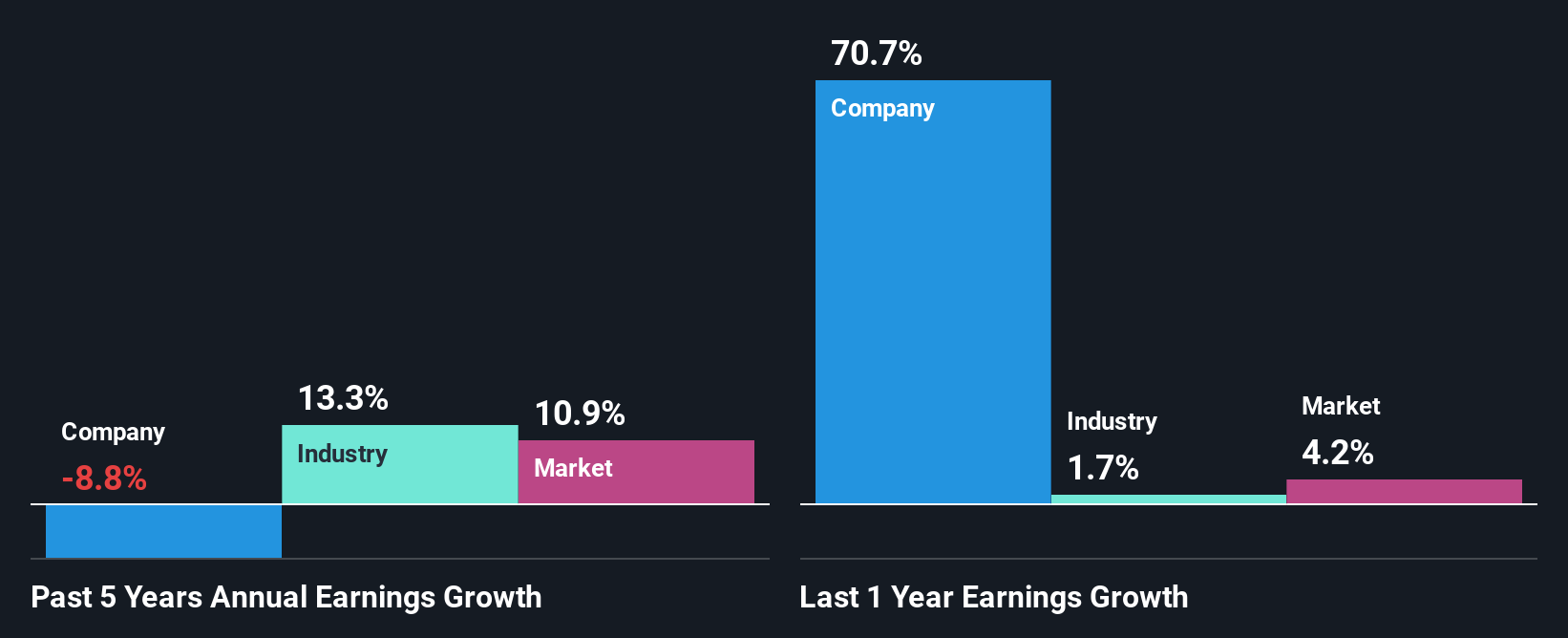Is The Market Rewarding Mips AB (publ) (STO:MIPS) With A Negative Sentiment As A Result Of Its Mixed Fundamentals?
Mips (STO:MIPS) has had a rough three months with its share price down 25%. It seems that the market might have completely ignored the positive aspects of the company's fundamentals and decided to weigh-in more on the negative aspects. Stock prices are usually driven by a company’s financial performance over the long term, and therefore we decided to pay more attention to the company's financial performance. Particularly, we will be paying attention to Mips' ROE today.
Return on equity or ROE is a key measure used to assess how efficiently a company's management is utilizing the company's capital. Put another way, it reveals the company's success at turning shareholder investments into profits.
How Is ROE Calculated?
ROE can be calculated by using the formula:
Return on Equity = Net Profit (from continuing operations) ÷ Shareholders' Equity
So, based on the above formula, the ROE for Mips is:
28% = kr140m ÷ kr502m (Based on the trailing twelve months to June 2025).
The 'return' is the income the business earned over the last year. So, this means that for every SEK1 of its shareholder's investments, the company generates a profit of SEK0.28.
See our latest analysis for Mips
Why Is ROE Important For Earnings Growth?
We have already established that ROE serves as an efficient profit-generating gauge for a company's future earnings. We now need to evaluate how much profit the company reinvests or "retains" for future growth which then gives us an idea about the growth potential of the company. Assuming all else is equal, companies that have both a higher return on equity and higher profit retention are usually the ones that have a higher growth rate when compared to companies that don't have the same features.
A Side By Side comparison of Mips' Earnings Growth And 28% ROE
To begin with, Mips has a pretty high ROE which is interesting. Secondly, even when compared to the industry average of 13% the company's ROE is quite impressive. For this reason, Mips' five year net income decline of 8.8% raises the question as to why the high ROE didn't translate into earnings growth. So, there might be some other aspects that could explain this. These include low earnings retention or poor allocation of capital.
However, when we compared Mips' growth with the industry we found that while the company's earnings have been shrinking, the industry has seen an earnings growth of 13% in the same period. This is quite worrisome.

Earnings growth is a huge factor in stock valuation. It’s important for an investor to know whether the market has priced in the company's expected earnings growth (or decline). Doing so will help them establish if the stock's future looks promising or ominous. What is MIPS worth today? The intrinsic value infographic in our free research report helps visualize whether MIPS is currently mispriced by the market.
Is Mips Using Its Retained Earnings Effectively?
Mips' very high three-year median payout ratio of 123% over the last three years suggests that the company is paying its shareholders more than what it is earning and this explains the company's shrinking earnings. Paying a dividend higher than reported profits is not a sustainable move.
Moreover, Mips has been paying dividends for six years, which is a considerable amount of time, suggesting that management must have perceived that the shareholders prefer consistent dividends even though earnings have been shrinking. Existing analyst estimates suggest that the company's future payout ratio is expected to drop to 76% over the next three years. As a result, the expected drop in Mips' payout ratio explains the anticipated rise in the company's future ROE to 42%, over the same period.
Summary
Overall, we have mixed feelings about Mips. Despite the high ROE, the company has a disappointing earnings growth number, due to its poor rate of reinvestment into its business. With that said, we studied the latest analyst forecasts and found that while the company has shrunk its earnings in the past, analysts expect its earnings to grow in the future. Are these analysts expectations based on the broad expectations for the industry, or on the company's fundamentals? Click here to be taken to our analyst's forecasts page for the company.
New: Manage All Your Stock Portfolios in One Place
We've created the ultimate portfolio companion for stock investors, and it's free.
• Connect an unlimited number of Portfolios and see your total in one currency
• Be alerted to new Warning Signs or Risks via email or mobile
• Track the Fair Value of your stocks
Have feedback on this article? Concerned about the content? Get in touch with us directly. Alternatively, email editorial-team (at) simplywallst.com.
This article by Simply Wall St is general in nature. We provide commentary based on historical data and analyst forecasts only using an unbiased methodology and our articles are not intended to be financial advice. It does not constitute a recommendation to buy or sell any stock, and does not take account of your objectives, or your financial situation. We aim to bring you long-term focused analysis driven by fundamental data. Note that our analysis may not factor in the latest price-sensitive company announcements or qualitative material. Simply Wall St has no position in any stocks mentioned.
About OM:MIPS
Mips
Develops, manufactures, and sells helmet-based safety systems in North America, Europe, Sweden, Asia, and Australia.
Exceptional growth potential with flawless balance sheet.
Market Insights
Community Narratives



